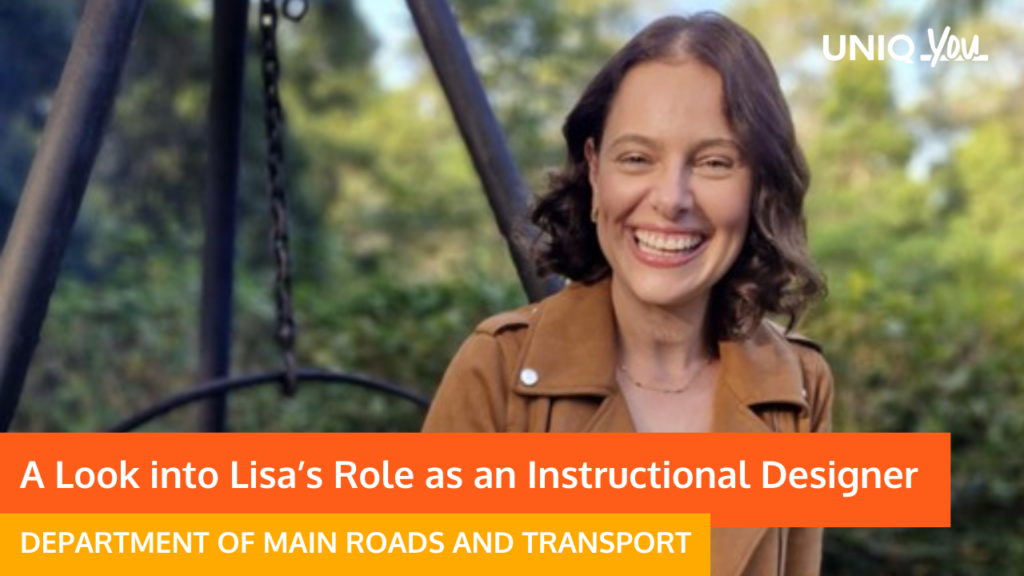When you think about transport and roads, do you imagine construction sites and traffic cones? There’s so much more going on behind the scenes and women are leading the way in some of the most innovative and unexpected roles in the industry!
One of those trailblazers is Lisa Listama, an Instructional Designer in the Transport and Main Roads (TMR) Learning and Development team. Lisa’s role may not be what you’d traditionally think of when you hear ‘STEM’, but her job relies heavily on technology, creativity and innovation.
Can you describe your role as an Instructional Designer at TMR?
I create mandatory online courses (eLearning) for everyone at TMR. My role is to work with specialised people, such as workplace health and safety staff, to write and create eLearning that everyone in the department has to complete when they join.
It’s a really fun job! I get to learn new topics when I have to create a course and I get to add my creative flair when using the eLearning creation software (authoring tool) called Articulate 360. I make games and animated videos, I do lots of voice overs and I do my best to make online learning as educational as possible without making it boring!
I often work on things like:
- making eLearning more inclusive for neurodivergent learners
- designing simulations or branching scenarios for workplace skills
- using data to improve how people learn on the job.
How does your role use STEM in practice?
As an instructional designer and eLearning developer, I use science, technology, engineering, and maths skills every day to design better learning experiences. Here’s how:
- Science: I apply psychology and neuroscience to understand how people learn — things like memory, attention, and motivation.
- Technology: I work with digital tools like eLearning software (e.g., Articulate Rise, Storyline) and AI tools to build interactive and accessible online training.
- Engineering: I follow systems-thinking and design processes to solve problems — breaking big challenges down into smaller steps, and testing solutions.
- Mathematics: I use data and analytics to improve learning outcomes, measure engagement, and evaluate success.
What was your career path like?
Well, I’m a high school dropout so I have a very unusual career path but I wouldn’t change it for the world.
I moved to Canberra from the Sunshine Coast (QLD) when I was 19 and I joined the public service as an administration officer. I moved around the departments and tried lots of different roles for several years – most of which I didn’t like much. Then I was working for the Department of Veterans’ Affairs and an eLearning needed to be created. I put my hand up to learn how and I fell in love with it. I had a wonderful mentor who helped me learn the ropes and the rest is history!
I’ve since done a Diploma of Training Design and Development, Bachelor of Arts (Internet Communications) and I’m currently doing my Master of Education (Learning and Leadership). I’ve created over 1000 online courses for companies and organisations all over the world. I’ve also ran my own eLearning business and have had a blast creating unique online courses on a wide range of topics for hundreds of thousands of people. I’ve won several awards which I’m incredibly proud of. I now mentor people from all over the world who want to become instructional designers and eLearning developers and support those who are already in the field but want to create more neurodiverse friendly learning for adults.
What would you tell your high school self now?
I would say ‘Lisa, you are not dumb. You have undiagnosed ADHD. School is tough for you but one day you are going to take this experience and make learning FUN! Trust the process. Never give up on yourself.’
